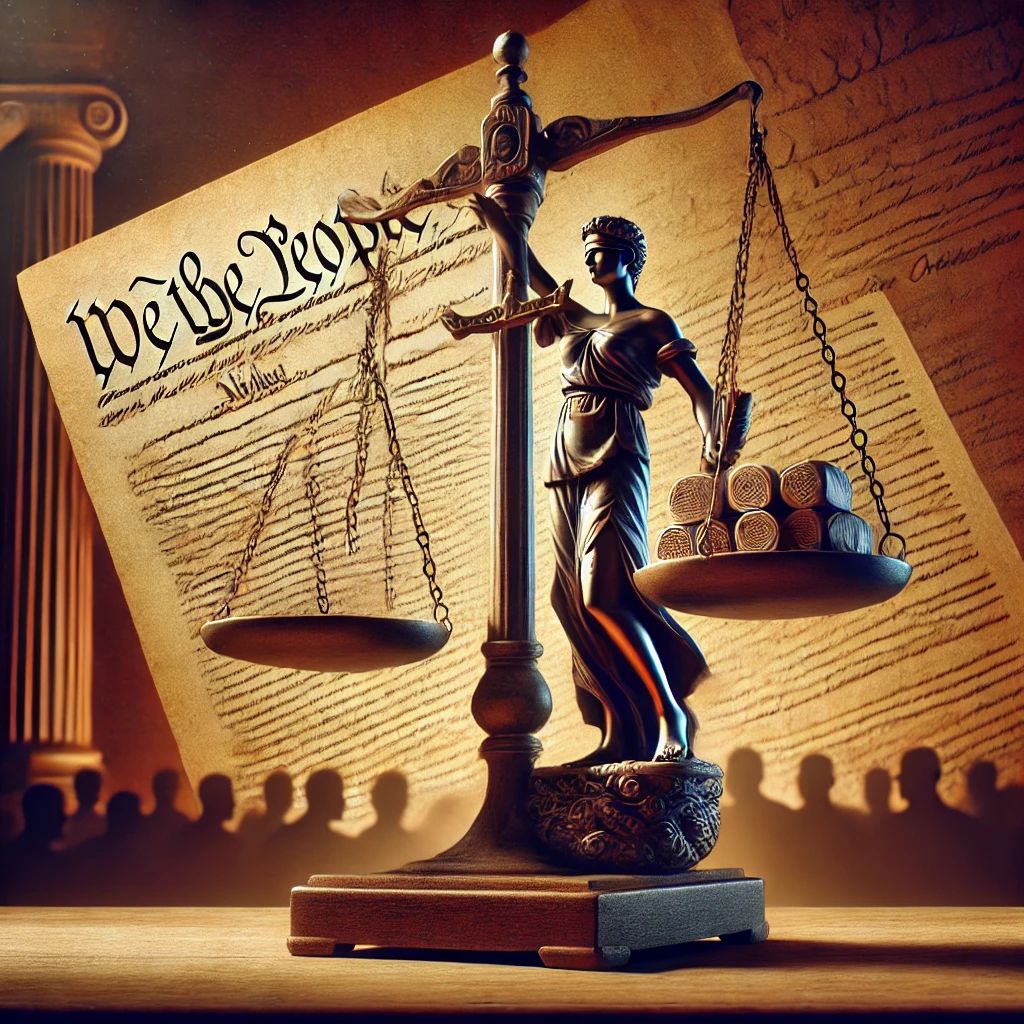
The United States is in the midst of a significant illegal immigration crisis, with enormous consequences for the nation’s economy, social infrastructure, and public safety. In 2024, the total foreign-born population soared to a record 51.4 million, increasing by 6.4 million since 2021. Shockingly, 3.8 million of that growth (nearly 58%) came from illegal immigration, driving the estimated total illegal immigrant population to 14 million, up from around 10.2 million just three years prior. This is a crisis that demands urgent attention, yet President Trump’s executive order, “Protecting the Meaning and Value of American Citizenship,” which seeks to limit birthright citizenship, is no solution. It jeopardizes the Constitution’s 14th Amendment and sets a precedent that could, over time, unravel the very foundations of American democracy.
The Constitution: Protecting Liberty and Stability
The 14th Amendment, ratified in 1868, guarantees citizenship to all individuals born on U.S. soil, provided they are subject to U.S. jurisdiction. It was designed to ensure equal rights for formerly enslaved individuals and establish a uniform definition of citizenship. The Supreme Court upheld this principle in United States v. Wong Kim Ark (1898), confirming that children born to foreign nationals in the U.S. are citizens, regardless of their parents’ legal status.
President Trump’s executive order directly challenges this long-standing interpretation. By attempting to exclude children of undocumented immigrants from birthright citizenship, the order undermines constitutional protections. It creates a dangerous precedent, one that invites future leaders to use executive power recklessly; one that compromises the checks and balances enshrined in the Constitution.
The Dangers of Setting This Precedent

This executive order raises an unsettling question: If one president can unilaterally reinterpret a constitutional amendment to suit their policy goals, what stops another from doing the same? The door would be open, the bar lowered, for future administrations to rewrite other amendments without the consent of Congress or the people.
- The Second Amendment:
- A left-leaning president could issue an executive order to effectively repeal the Second Amendment, outlawing private gun ownership in the name of public safety. This action would erase the constitutional right to bear arms, leaving law-abiding citizens defenseless and setting the stage for profound unrest.
- The Fourth Amendment:
- Another administration might redefine the Fourth Amendment’s protections against unreasonable searches and seizures. By executive order, they could authorize widespread government surveillance, tracking citizens’ every move, all in the name of combating crime or national security. Such an order would fundamentally change the relationship between individuals and their government, turning privacy into a privilege, not a right.
If constitutional amendments can be so easily undermined, what remains of the rule of law? What remains of democracy itself? This executive order doesn’t just challenge the 14th Amendment; it invites chaos.
The Immigration Crisis: A Pressing Issue

The immigration crisis is real; its consequences are impossible to ignore. For example:
- In 2024, New York public schools struggled to absorb over 20,000 migrant children. Classrooms became overcrowded, resources stretched thin, and educators overwhelmed.
- Taxpayer costs for illegal immigration in Illinois reached a staggering $4.59 billion in 2022. This burden averaged $930 per household annually, money taken from hard-working families to cover services strained by unauthorized migration.
- At the border, human tragedy continues. In 2022, border deaths spiked to 850, a 24% increase compared to previous years. Each of these numbers represents a person; each loss a failure of policy.
These challenges demand action. But action cannot come at the expense of constitutional integrity. The moment we sacrifice our foundational principles for temporary solutions, we risk far more than we gain.
A Constitutional Approach to Immigration Reform
The immigration crisis is urgent, but its resolution requires legislative action, not executive overreach. Congress holds the authority to:
- Reform immigration systems to prioritize security and expand legal pathways.
- Bolster border enforcement with infrastructure that works, coupled with humane policies that deter unauthorized crossings.
- Debate, if necessary, the 14th Amendment’s Citizenship Clause through the process outlined in Article V—deliberately and with the consent of the people.
These solutions respect the Constitution; they preserve its integrity while addressing the crisis head-on.
Conclusion
President Trump’s executive order, though aimed at tackling a legitimate issue, reveals the dangers of undermining constitutional protections. This action signals to future administrations, particularly those with opposing ideologies, that constitutional amendments are no longer sacred. What is done to the 14th Amendment today could easily be done to the Second or Fourth tomorrow. A future president may take this precedent and decide that the right to bear arms or the right to privacy can be dismissed just as easily.
Yes, the challenges posed by illegal immigration are undeniable. Yes, they require bold action. But they cannot be solved by tearing apart the very framework that protects American democracy. If we allow executive orders to redefine constitutional rights, we risk transforming the United States into a nation governed not by laws, but by the whims of those in power. The Constitution must remain a cornerstone, not a tool, and the solutions to our most pressing issues must be built upon its enduring principles.